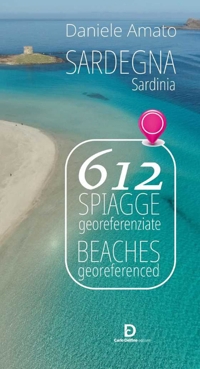Felice Palma. Massa 1583-1625. Collezione / Collection.
Testi di Andrei Cristina, Ciarlo Nicola, Federici Fabrizio, Claudio Casini e Sara Ragni.
Testo Italiano e Inglese.
Pontedera, 2024; ril. in cofanetto, pp. 289, ill. b/n e col., tavv. b/n e col., cm 24,5x34.
(L'Oro Bianco. Straordinari Dimenticati. The White Gold Forgotten Masters).
prezzo di copertina: € 160.00
|
Libri compresi nell'offerta:
Felice Palma. Massa 1583-1625. Collezione / Collection.
Testi di Andrei Cristina, Ciarlo Nicola, Federici Fabrizio, Claudio Casini e Sara Ragni.
Testo Italiano e Inglese.
Pontedera, 2024; ril. in cofanetto, pp. 289, ill. b/n e col., tavv. b/n e col., cm 24,5x34.
(L'Oro Bianco. Straordinari Dimenticati. The White Gold Forgotten Masters).
OMAGGIO (prezzo di copertina: € 160.00)
Le botteghe del marmo
Testo Italiano e Inglese.
Ospedaletto, 1992; ril., pp. 153, 10 ill. b/n, 60 ill. col., cm 24x29.
(Immagine).
OMAGGIO (prezzo di copertina: € 34.49)
Museo Stefano Bardini. I Bronzetti e gli Oggetti d'Uso in Bronzo
A cura di Nesi A.
Firenze, 2009; br., pp. 191, 102 ill. b/n, 7 ill. col., cm 17x24,5.
(Museo Stefano Bardini).
OMAGGIO (prezzo di copertina: € 30.00)
Bronzetti e Rilievi dal XV al XVIII Secolo
Bologna, 2015; 2 voll., ril. in cofanetto, pp. 729, ill., tavv. col., cm 21,5x30,5.
OMAGGIO (prezzo di copertina: € 90.00)
The Arca di Sant'Agostino and the Hermits of St. Augustine in Fourteenth-Century Pavia
Dale Sharon
Harvey Miller Publishers
Testo Inglese.
London, 2015; cartonato, pp. 203, 43 ill. b/n, cm 22x28.
(HMSAH. 74).
collana: HMSAH
ISBN: 1-909400-01-7 - EAN13: 9781909400016
Soggetto: Architettura e Arte Religiosa
Periodo: 1000-1400 (XII-XIV) Medioevo
Testo in: 
Peso: 0.37 kg
Both orders claimed a founding by St. Augustine himself, whose relics were somewhere in the church - although their precise location was unknown. The unprecedented division of the church and the ensuing conflict between the Hermits and the Canons were embedded in the larger struggle between the forces of universal church and regional state that engulfed the city of Pavia and ultimately much of Italy in the fourteenth century. Both city and church were contested repeatedly among the papacy, the empire, and the Visconti.
This book is a study of the political negotiation between the papacy and the Visconti conducted by the Hermits at San Pietro in Ciel d'Oro in the Trecento - and a related examination of the Arca di Sant'Agostino, the patronage and iconography of which were deeply enmeshed in that larger historical context. This volume argues that the Arca's iconography embraces three seemingly disparate agendas: the Hermits' own claims to St. Augustine, the celebration of Visconti authority in Lombardy, and the promotion of papal temporal power.
Leonello Bertolucci € 15.20
€ 16.00 -5 %
Daniele Amato € 19.00
€ 20.00 -5 %
Etica Coniugale. Per un Rinnovamento della Morale Matrimoniale
In gioco. Illusione e divertimento nell'arte italiana 1850-1950
Proarch Studium 2030. La città degli studenti/Call for projects
Officina 1922. Una Mostra alle Origini della Fortuna del Barocco
















